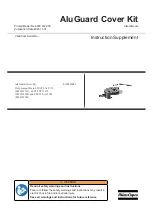
AEOPhoto
Page 1 of 2
Revision: 3-Jun-14
AEO Lightning Strike! Micro Series Version 4
V 4 Update Coming
Test your new device right out of the box: Set the mode switch to “Lightning”. Turn the power on. The
red LED will flash every time the device triggers. It’s normal for it to trigger once on power up. If it
continues to trigger, check for light sources leaking into the room. (If you cover the window of the
device with your hand, it should not trigger). Set off a camera flash (using another camera or a flash
attachment). The flash should trigger the device.
Theory of Operation:
The device triggers on the first bolt it detects. Your camera shutter mechanism is
not fast enough to catch that first bolt, but fortunately, most bolts are followed by many more. Thus,
you want to have the camera shutter open for a fairly long time to capture those subsequent bolts
(we’ve used 10 seconds with good results).
Photographing Lightning is as much Art as it is Science. Getting the right conditions and settings can be
challenging, and some folks have a better knack for it than others. But to get you started, here are some
basic “recommendations”:
1.
The camera should be mounted on a tripod. You want it stable during the exposure.
2.
Mount the device in your camera’s hot shoe mount with the red semi-clear window facing the
direction you are photographing. Insert the supplied plug into your camera remote shutter
interface.
3.
Point the camera at the storm or in the direction you see lightning activity.
4.
Set your Auto Focus feature to OFF or Disable.
5.
Set the focus to infinity. (If the lightning is closer than that, you’re too close to it!!!)
6.
We’ve found that when photographing lightning at night, an f-stop of 5.6 works well.
7.
Shutter speed should be long, example around 10 seconds. (This won’t work during the day.
For daytime shots, don’t exceed 1 second and you’ll need a smaller aperture/ larger f-stop as
well).
8.
Turn the lightning trigger device power on FIRST before you power up the camera. (When the
trigger is first tuned on, it will trigger once on power up . . . not a big deal for digital
photography, but if you use film, you’ll lose one frame.)
9.
Avoid using your cell phone near the device while it’s operating. Your lightning shutter trigger is
a sensitive device and can be triggered inadvertently by strong, nearby RF transmissions.
10.
Grab your favorite refreshing beverage and wait for the show to start!




















